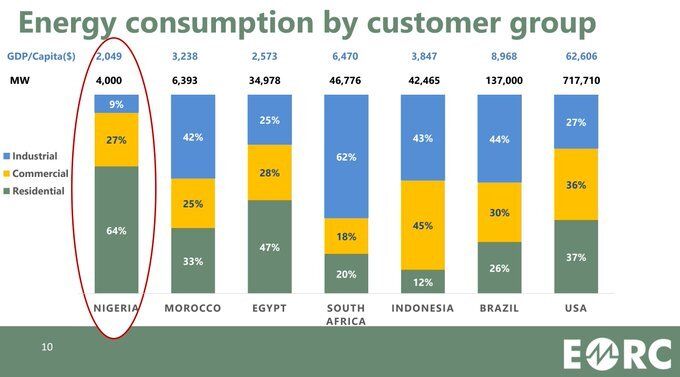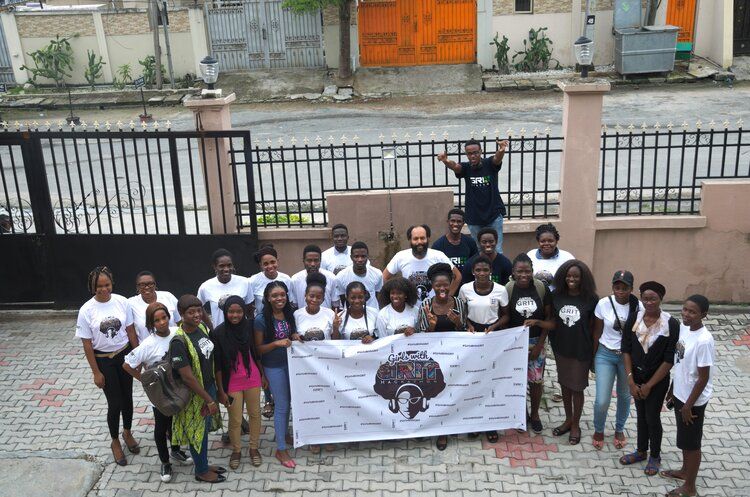Hardware Things is managed by Chuma Asuzu through the support of generous sponsors.
The published features on this site are licensed CC BY-SA 4.0, unless otherwise stated.
David Adebiyi
In September 2016, I was invited for a technical assessment at GRIT Systems as part of the hiring process for a hardware engineering role. This assessment lasted eight hours but I did not need that long to make a decision on whether I was going to join the team, should an offer be made. I made that decision during the lunch break. At lunch I met a future colleague who had strong opinions about 3D printing. Over our meals of rice and chicken stew, we had a fascinating discussion about additive manufacturing techniques. He made very good points and I was enchanted by the fact that GRIT had brilliant engineers who were heterodox in their thinking and approach. I was completely sold on the company.
At the time, I had recently graduated with a degree in Physics and was a self-taught electronics hobbyist with an internship at Ayuku Electronics under my belt. At Ayuku, I had learnt to produce custom LED display products but nothing on the scale as my new job would require.
Looking back now, a year and four months after I left GRIT Systems, I remember my time there fondly. The company is not active anymore, and my former colleagues have by now moved on to other things. But the technology we built together stands for itself. In many ways I became a real engineer at GRIT Systems: performed some amazing technical feats, delivered projects for multinationals, hired brilliant people, and led a great team. And this is the story of how we did it.

Nigeria is an under-electrified country with only 56.50% of the population having access to grid power. Even those with access to the grid do not have a steady supply. This is one of the causes of the country’s underwhelming manufacturing sector, it also affects the general productivity. GRIT Systems was founded in 2015 against this backdrop, with the belief that to solve a problem as endemic as Nigeria’s power crisis, having reliable data on electricity usage was the key. If one had data across the entire value chain - from generation, to distribution, and then consumption - one could solve real problems. So we set out to collect this data.

The company built hardware devices to measure electricity usage of buildings as well as a software platform (web and mobile) for data analytics. The company also designed a series of modern smart electricity meters for the larger electricity distribution market. The products were targeted at building owners, energy auditors, and IPPs (independent power producers).
The company built an enviable structure that enabled rapid prototyping, but manufacturing was a hard nut to crack. Making electronics is easy on paper. You need your design, simulate the circuit behaviour with computer software, then prototype on a breadboard. Some more complex circuits require a PCB (printed circuit board) from the beginning. We kept an inventory of the most utilized components so that most prototypes could be made quickly. The stash was quite something, we probably had more variety of passive and active components than many electronics shops in Arena Market, Lagos.
For more involved concepts, the components were sourced online through Chinese suppliers or bought on popular online platforms such as Digi-Key, Arrow or Farnell. Shipping from Europe or North America was always quite expensive. Most components arrive in Nigeria by air, usually through a freight company. But getting here is the easy part. Delays to clear the ports, seizure for frivolous reasons, and other customs inefficiencies complicate the simple process of buying a component online and getting it delivered. Some entrepreneurs like Hub360 are trying to solve this problem. But for anyone building something unique or moderately complex, sourcing overseas is inevitable.
Apart from component sourcing, another big problem we had at GRIT was PCB fabrication. Printed Circuit Boards, popularly known as ‘board’ or ‘panel’ on the streets of Alaba or Computer Village, are at the heart of any electronic product. Our ecosystem is yet to produce PCBs at scale. Local PCB houses that can churn out prototypes in days or a week are needed, these companies will eliminate the challenge of rapid prototyping most hardware teams face in the country. However, it remains to be seen if the market is large enough to sustain these kinds of businesses. It’s almost a chicken and egg question to which I have no definite answer. GRIT solved many of these challenges in unique ways that ultimately slowed us down.
GRIT Systems had a formal hierarchical organizational structure on paper, although in reality it was flat. At the very top of its management was Ifedayo, who was the CEO and founder. The engineering team was led by the CTO, supported by the software and hardware team leads. But in truth, everyone reported to the CEO.
When it came to company culture, it was a high-octane environment. GRIT was a very difficult place for those who are not high achieving: first class degree in EE, started coding in high school, solved maths while dreaming, built racing drones in university, would prefer a dev board instead of a cake on their birthday - that type of high-achieving. People were expected to be self-starters, and capable of learning new things very quickly with little or no supervision.

There is no other startup where a 400 Level (fourth year of five) engineering intern builds test equipment. Friday (not his real name) struggled when he first joined us for his 6 months undergraduate internship. He was handed tasks he felt were beyond his capabilities, and I remember supervising him as he designed a device to easily test the magnetic hysteresis of ferrite cores. Ultimately, the experience he got from such a difficult task helped crystalize his academic knowledge into real know-how. He gained confidence in his abilities and he even went on to design software that was very valuable to the company.
Arguments happened a lot at GRIT and a lot of them were over technical details. For example, we once spent weeks evaluating the best Real-Time Operating System (RTOS) for a major project. An RTOS is a piece of firmware that a processor uses to manage real-time tasks. Unlike other types of software, physical computing sometimes has real-time constraints and a failure to meet this constraint could be catastrophic. This firmware helps manage the timing requirements in an efficient way that’s almost impossible for an applications programmer to do from scratch, which makes it expensive.
With cost, efficiency and safety certification in mind, an engineer at GRIT spent weeks evaluating different RTOS options, he profiled different pieces of software and made a final recommendation that saved us thousands of dollars. Sometimes, the new intern prevailed over the battle-tested engineer in a technical debate. It was really a meritocracy.
Everybody at GRIT was an expert at something, and more importantly, everyone was willing to share their expertise. There are not many companies where the CEO is willing to have pair-programming sessions with an intern, although I am still undecided on whether this was a positive thing in itself. I have to give credit to the brilliant and amazing people I met and worked with at GRIT Systems. Ifedayo, Ikenna (my immediate boss), and Emmanuel were big influences in my career. I learnt a great deal talking to them and since I didn’t have an engineering education, conversations with my colleagues filled many gaps for me.
GRIT was not a perfect place, I must have made that pretty clear by now. There are things I wish I did differently. We ran at a fast pace, and sometimes hired brilliant engineers who were not just compatible with our speed. I feel I did not do enough for some junior colleagues who needed help. Once, we hired a brilliant engineer who was a great programmer on the hardware team but the hardware team required full-stack engineers. Not full-stack in the software sense but full-stack in the sense that they are comfortable with designing hardware, writing firmware for microcontrollers, doing math analysis, and writing python scripts for systems automation.
This engineer was evidently skilled at web development and he would have been immediately productive on the software team, but he envisioned a career in robotics so he stuck to his guns and remained on the hardware team. He made mistakes which hurt his confidence and as a result I didn’t like assigning difficult tasks to him. I should have been more patient with him and more forceful in my defense of his performance during reviews. He was eventually let go, and he moved on to software development at his next job. I believe the whole event traumatized him enough that he left hardware.
The organization as a whole made mistakes. GRIT Systems wanted to be the Nigerian version of Bell Laboratories. Unlike Bell, we didn’t have a cash cow like AT&T. We spent too much time in R&D. The focus on manufacturing in Nigeria was a mistake in my opinion. While the need for a powerful manufacturing base is non-negotiable for a country with aspirations of growth, a company is not the federal government. Industrial policy is not something a single company in Nigeria can pull off. Companies like Dangote Group and Tolarams built entire industrial infrastructural systems from the ground up. Unfortunately, this is difficult for technology startups whose investors want high growth almost at all costs.

Time is the most important resource a startup has, so speed in testing ideas is very important. Like all startups, we were short on human capital so we should have tested ideas quickly and focused on the ones that showed real promise. GRIT would have made more progress focusing less on vertical integration of the whole product. Instead of trying to build a mass-market meter, we should have focused on building the operating system for solar energy companies by providing data monitoring and analytics. This would have been an easier market with a better opportunity for growth.
Management could’ve been different. A co-founder who was non-technical but skilled in marketing, sales, and business development would have provided a counterweight to the influence of the sole founder, who was more of a technical operator. I believe GRIT Systems was top-heavy on engineering talent but short on business talent. Having someone at the management level who had their eyes on the ball in these areas would have been great.
The Nigerian electricity distribution market is also notoriously difficult to crack. Hardware startups in the energy space will make more headway building products for the renewable energy sector (solar in particular) rather than the larger grid electricity metering market. One reason is that the financial bedrock of the grid distribution is opaque. There’s too much inertia and pushback against transparency by the major stakeholders (except the final user), it is wiser to devote effort to the solar energy industry. Recent investment data shows that with the exception of fintech companies, solar startups have raised the most money.
A startup that’s involved with hardware must be very focused on positive unit economics, being sustainable as fast as possible. Hardware startups in Nigeria might have to forget about manufacturing for the time being. I believe focusing on design and integration is the way to ensure survival, for now. Eventually, an ecosystem that supports advanced manufacturing will be built, but don’t die for that laudable dream. Make money and survive.
Sign up with your email address to receive the monthly newsletter.